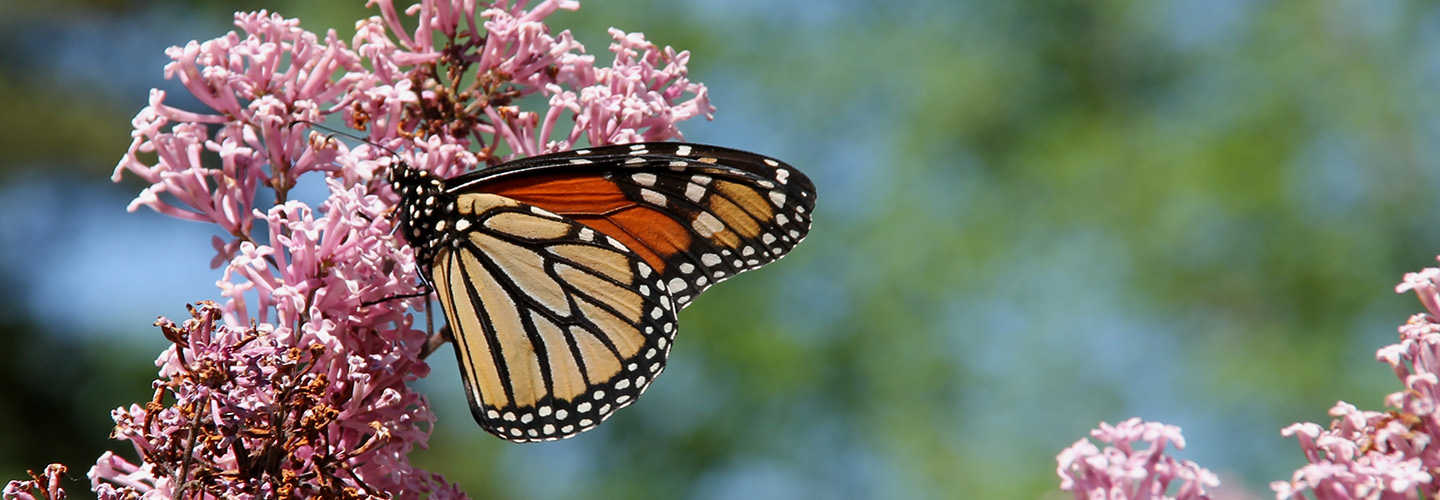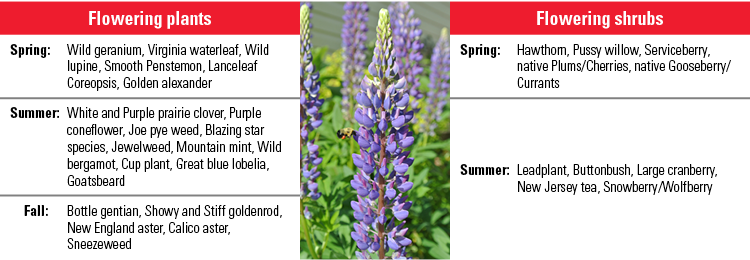Helping pollinators feel right at home
How to create a welcoming pollinator habitat in your yard

Spring is finally springing. That has many of us thinking about plans to get the yard ready for warmer weather. Adding pollinator habitat to your landscaping is good for you and the environment. Did you realize about 1/3 of our crops require pollination, and so do 70-80% of flowering plants in the Midwest?

Nicole Menard, an Urban Biologist with the U.S. Fish and Wildlife Service, offers expert advice:
Q. How can you get started in your yard?
If part of your yard is not looking great, is high maintenance, or you’re not sure what to do with it, you can replace it with native flowers, create a bee lawn or plant a pollinator garden.
Habitat for pollinators includes food, water, and shelter, so any way you can address those needs is helpful. Planting native perennial flowers that bloom all season from spring to fall give pollinators a habitat they can rely on for a constant food source. It helps to plant patches of the same plant for pollinators to get their food efficiently. You can also build a bee house for shelter, or plant native grasses like Little Blue Stem to allow bees to nest.
“Get messy.”
It’s okay to have your yard be a little messy. Although we may be accustomed to raking all of our leaves or removing all of our branches and twigs, a lot of that material is prime pollinator real estate. If you can leave those things over the winter, they’ll be used by pollinators in their different life stages. Leave your plant stems standing up in the winter to give native bees a place to nest. Also, butterfly and moth larvae can survive the winter in piles of branches and leaves.
Q. What types of plants are the best to start?
Seedlings, plugs or pots will show immediate results. Seeds are less expensive but take longer to manifest. Plant your seeds in the spring or fall to allow them to germinate with less competition. Choose local seeds and plants that are adapted to your area. Avoid or limit pesticide use in your yard and check with your nursery to see that they aren’t using them as well to ensure that you’re choosing pesticide-free plants.
Sample plant list

Q. How long will it take the pollinator habitat to establish?
You’ll see more immediate impact with plugs while seeds take about one to three years to develop. Native perennial plants reseed themselves each year and fill out the space as they establish. Remember, plants will grow but may not flower until the second or third year, and that’s okay because pollinators can use different types of plants, grasses and milkweed leaves in addition to flowers.
Q. What type of maintenance is needed?
If using plugs or seedlings, the primary maintenance is to water after planting for about six weeks unless you’re getting adequate rain. Weeding is also essential to remove the competition in the area. While weeding and watering are required initially, as your native plants establish they will become low maintenance over time.
Q. Why create a pollinator habitat?
So many foods we love like apples, blueberries, pumpkins, tomatoes, coffee, and chocolate require pollination. Pollinators are needed for 70-80% of flowering plants in the Midwest and play an important role in their seed production.
Pollinators are declining because of habitat loss, disease, and pesticide use, and climate change is impacting when flowers bloom. The Rusty Patched Bumble Bee is the first endangered bumble bee species listed in the United States.
Make an impact - it can be easy
Helping pollinators doesn’t take much, whether it’s your yard, urban green space, or actions by businesses. It doesn’t have to be expensive, time-consuming, or complicated.

Xcel Energy has more than 2,100 acres of pollinator habitat we’re maintaining at more than 40 different sites. Learn more here.
Watch this short video to learn more about Empowering Pollinators.
Click on the articles below for more tips on how to get started on your pollinator garden:
How to Build a Pollinator Garden in 7 steps


